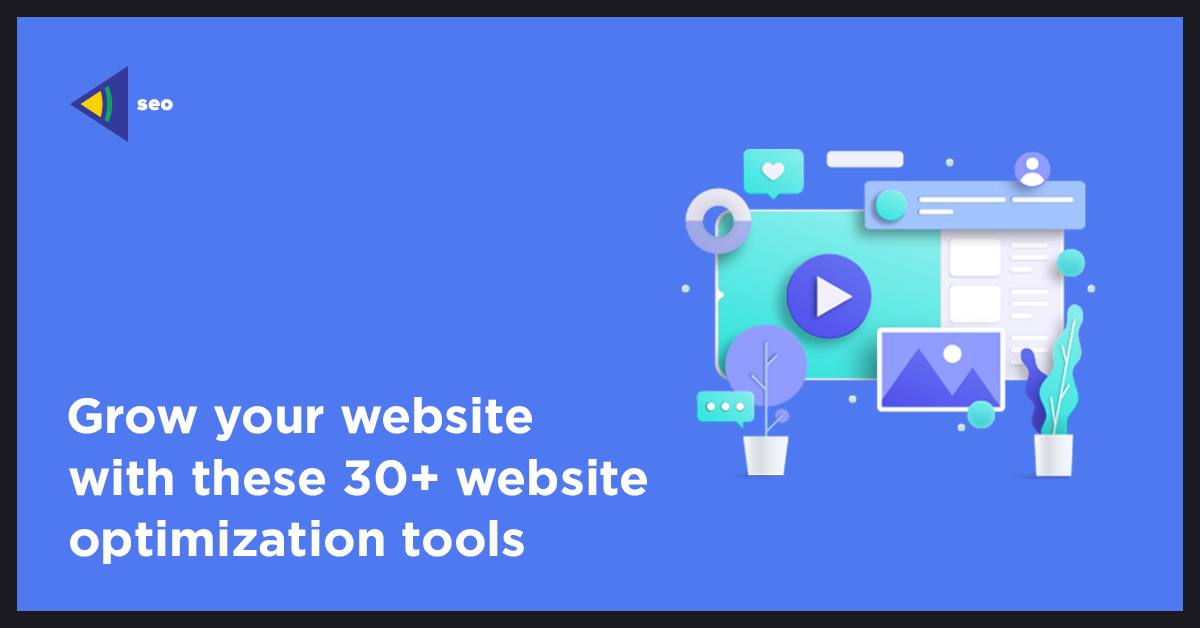These 30+ website optimization tools will help you grow your website
To sustain long-term growth, it is crucial to continuously optimize your website. Your most important weapon in the fight for visitors and conversions is your ability constantly to improve your website. User expectations and the competition change, so you need to be able to continuously update your website.
It’s like taking your website to the next level. You’ve already spent a lot of time building it, now it’s time for optimization. This will keep you ahead of the rest and allow you to achieve iterative growth.
This guide will help you find the best website optimization tools, along with two additional tips that may surprise you.
What is website optimization?
Website optimization is the process of optimizing your website’s user experience (UX), accessibility and search performance and making changes to improve traffic and conversions. Website optimization can be achieved using a variety of tools and strategies such as search engine optimization (SEO), conversion rates optimization (CRO), mobile browsing optimization, page speed improvement and many others.
Top 7 Free Website Optimization Tools That Work in 2022 (And Beyond)
1. PageSpeed Insights
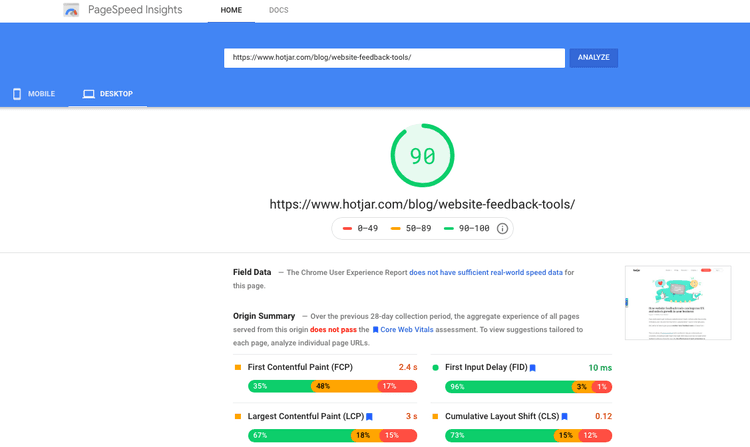
What it is: created by Google, PageSpeed Insights is a simple, free website speed checker.
What can you optimize? Website page speed, desktop website performance and mobile page speed.
Use it: Enter any URL and then click “Analyze”. PageSpeed Insights will give you a score of 100 for your site’s speed and make suggestions to improve it.
2. Hotjar
What it is: Hotjar is behavior analytics software that measures website visitor interactions and feedback.
What can you optimize? Find and fix bugs, optimize pages for conversion rate, improve UX.
Use it: Sign up and add the Hotjar tracking code to your website. You’ll start recording sessions and generate heatmaps. To get user feedback, set up a survey. Hotjar is completely free for 35 sessions/day, and 3 surveys .
3. Google Search Console (GSC)
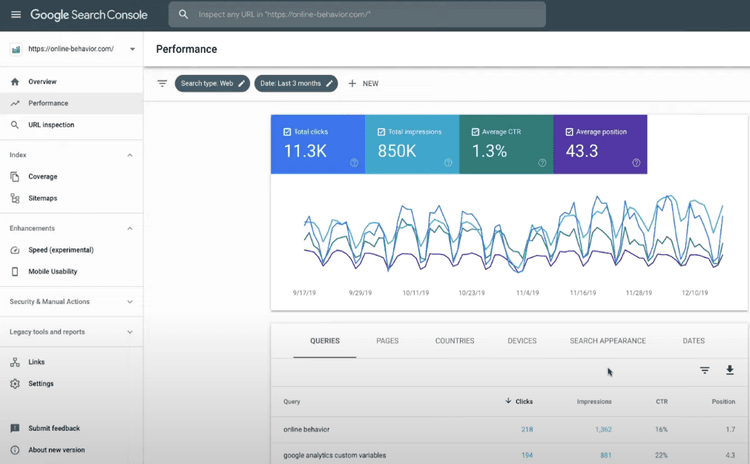
What it is: Search Console is a free search optimization tool from Google.
What can you optimize? You can measure your SEO performance, view keyword clicks and impressions, check your backlinks and look for crawling or speed errors.
Use it: Sign in with your Google account to verify site ownership and wait for data.
4. Screaming Frog
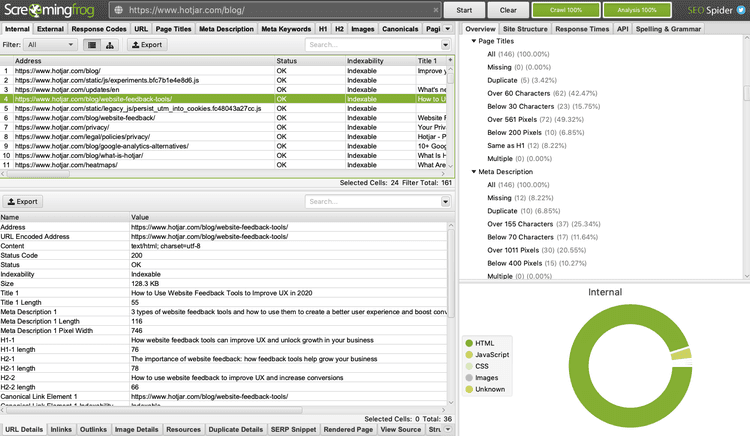
What it is: Screaming Frog is website crawling software for PC, Mac, or Linux.
What can you optimize: On-page and technical SEO – find broken links, check HTML sitemaps and XML sitemaps. Find duplicate content, check redirects and analyze page titles.
Use it: Download Screaming Frog, and then enter a URL (or sitemap) to begin crawling. Screaming Frog can be used for up to 500 URLs.
5. Google Optimize
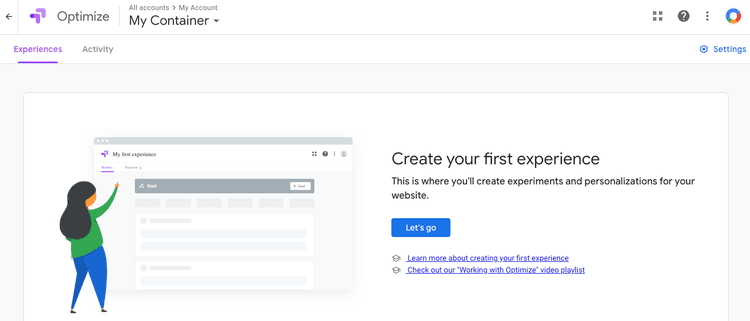
What it is: Google Optimize is a free website experiment platform that integrates with Google Analytics.
You can optimize Use A/B Testing, Split Testing, and Multivariate Testing (MVT), to test different pages and determine their performance. To use it, sign up with Google Optimize using your Google account. After creating page variants, add the tag and install the Chrome extension.
Did You Know? The Hotjar integration with Google Optimize automatically detects when visitors enter an Optimize experiment. You can filter Hotjar sessions by Optimize experiment ID to see how visitors scroll, click and browse each test page.
6. GTmetrix
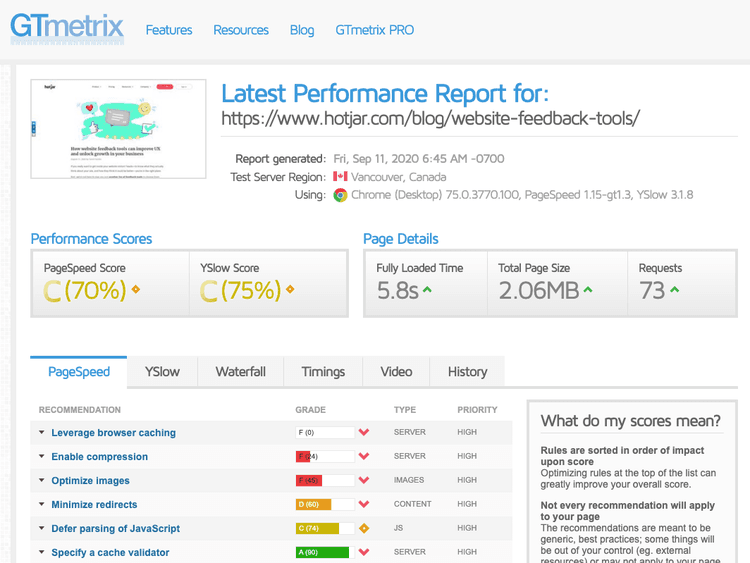
What it is: GTMetrix is a web page speed tool.
How to optimize Page load speed
Use it: Enter any URL and click “Test Your Site” to run a speed test. To learn how to speed up your site’s loading time, click the drop-down next to each recommendation.
7. WAVE

What it is: WAVE is a web accessibility evaluation tool.
What can you optimize? Find accessibility issues such as missing alt text, small font size, or contrast errors that render your content unaccessible for screen readers. Use it: Enter any URL and scroll through the icons-coded errors to find out what you can change and why accessibility is so important.
You don’t have to spend a lot of money to optimize your website. Now you are ready to play with some of the tools that we have just mentioned.
If you’re interested in optimizing a particular area of your website, such as making it load faster or finding new keywords for blog posts, here are some examples of the various types of web optimization that you can use and additional tools that can help you do the job.
Six types of website optimization tools
Website optimization is a huge topic. However, the tools that you can use fall under six main categories.
- Page speed
- Search engine optimization
- User experience (UX),
- Conversion rate optimization (CRO)
- Mobile-first
- Accessibility
You can use some tools to work on multiple areas at once. Hotjar, for example, can help improve UX on mobile and desktop. However, you will need to use multiple tools to optimize your entire site.
It’s like an optimization ecosystem. If you increase your website speed, it will also improve your SEO, UX and CRO efforts. The tools below will help you a lot if your focus is on improving your website.
1. Web page speed tools
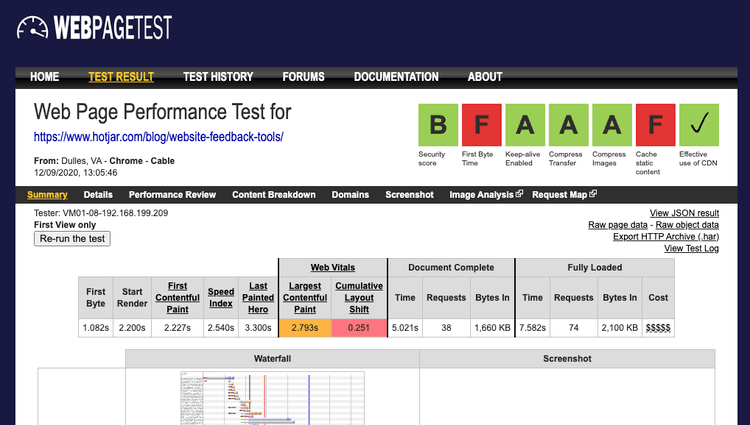
An example of a web page test on WEBPAGETEST
Slow websites can cause users to leave and harm search engine rankings. Website speed tools won’t fix slow websites by themselves. However, they will measure site speed and show what is slowing it down.
- Reduce and compress HTML, CSS, JavaScript and images
- Caching content
- Use faster-hosting servers
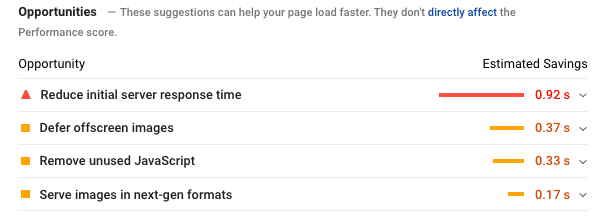
Speed improvement suggestions from Google Pagespeed Insights
Popular Website Speed Optimization Tools
Are you using WordPress? These popular optimization plugins will speed up your website:
2. SEO tools
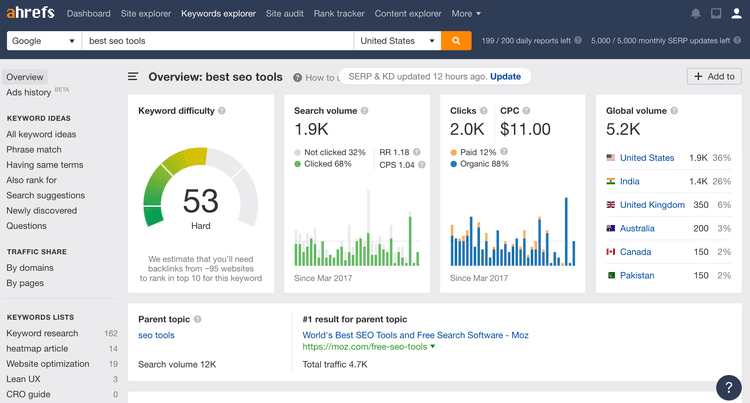
A keyword analysis dashboard from Ahrefs
SEO (search engine optimization), can help you receive more website traffic via search engines such as Google and Bing. You can optimize everything, from the structure of your website to how well you rank for specific keywords. There are many SEO tools available.
- Technical SEO Tools to audit on-page SEO (such as checking meta robots tags and 404 links).
- Keyword research tools to find keyword ideas
- Rank tracking to measure and compare search Traffic and show you where your site ranks within the SERPs for target keyword phrases
- Content optimization tools to optimize for target keywords
- Backlink analysis tool to check which pages link back to your site (or those of your competitors).
- Video SEO Tools to optimize your videos for high ranking on sites such as YouTube
There are two types of SEO tools: one-purpose tools like Screaming Frog, which is a technical SEO tool, and all-in-one tools like Ahrefs that do everything.
Most popular SEO tools
WordPress: These SEO plugins will help you optimize your WordPress site.
3. Tools for UX optimization
A great UX (user experience), will keep your visitors happy, and lower friction to your site. This will ultimately lead to higher conversions and more revenue.
While UX optimization tools won’t magically improve user experience, usability tests will help to understand user behavior and diagnose issues so that you can optimize pages for people to continue browsing and purchasing from your site.
UX tools assist with every step of the page optimization process, from finding where users get stuck to user research to spotting problems.
The most popular UX optimization tools
Read the bonus: Heatmaps are a very popular tool for UX optimization. They show how visitors interact with specific page elements.
4. Tools for CRO
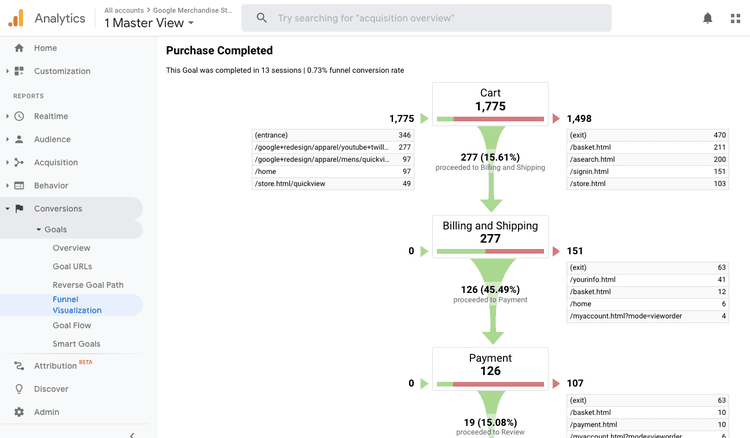
An eCommerce funnel visualization on Google Analytics
CRO (conversion rate optimization), can increase your website visitors who become customers or perform any other desired action.
A combination of several tools can improve your conversion rate.
- Traditional analytics ( tools such as Google Analytics).
- Software for behavior analytics (tools such as heatmaps session recordings or on-site surveys)
- Test tools (e.g. Google Optimize
Get a complete view of your site to help you give people the information they need.
Popular CRO tools
5. Mobile optimization tools
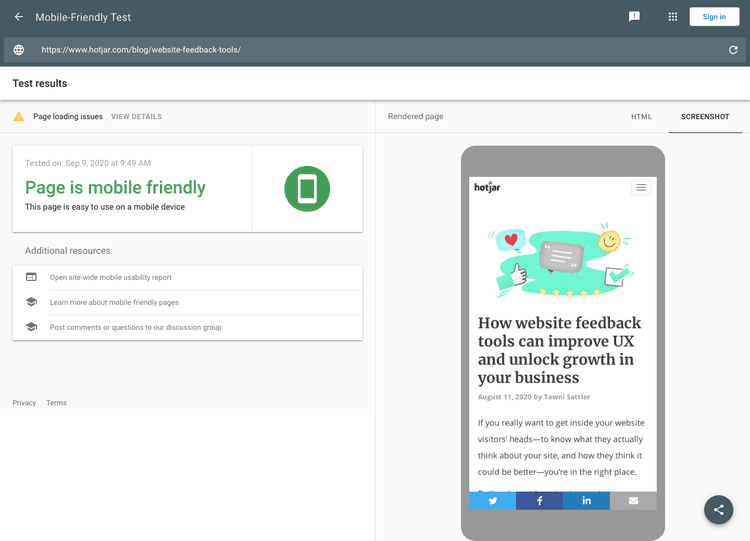
A Google mobile-friendly test results page
Mobile is more popular than desktop browsers, so mobile-first SEO can help you make sure that your website works well on mobile devices. Your site can be difficult to navigate on mobile with web elements such as pop-ups and image-heavy pages.
However, generalizations can be misleading. Check your analytics data to see what percentage of your customers and users browse on mobile devices. This will help you understand how important mobile optimization for your business is.
For example, if you use Google Analytics, the Audience >Mobile > Overview report is recommended.
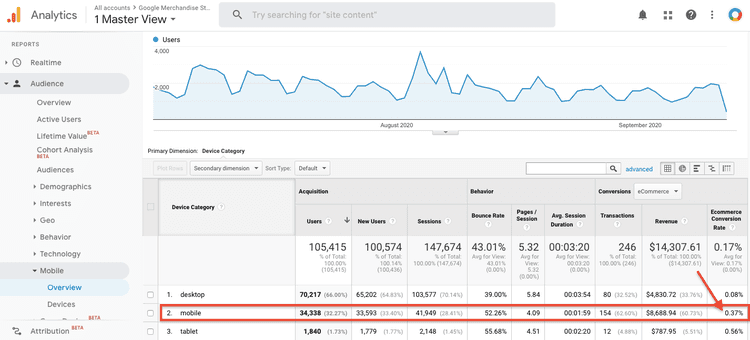
Google Analytics data showing high eCommerce conversion rate for mobile users
Mobile optimization tools that are popular
- Hotjar
- Mobile-Friendly Testing
- PageSpeed insights
- Google Search Console
- Google Analytics
- WebPageTest
6. Accessibility tools
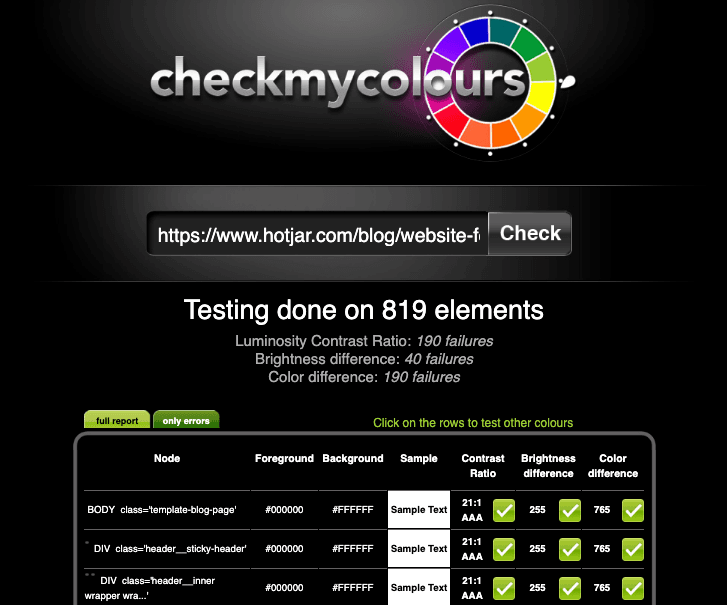
A website color contrast test on Checkmycolors
A website that is accessible is simple to use – which is great for both you and your customers.
Accessibility tools allow you to see how landing pages appear to screen readers or people with different impairments (for instance, different types and colors of colorblindness). They also provide suggestions for making your website more accessible.
Popular tools for accessibility optimization
Inclusion does not mean designing for everyone. It means designing for everyone. It is possible to capture more of the consumer market by including, learning from, and working with people from different perspectives.
– Ilana Davis, Shopify & Squarespace consultant
Two core strategies for website optimization that work every time
We’ve already listed over 30 web optimization tools you can use to increase your website traffic and generate more revenue. There are many more from which they came. But it’s not from any tool. Although you have the same optimization tools as your competitors, one thing is unique to you: how your customers behave on your website. The tool(s), you use to improve your website, is only a tool. It’s not the end in itself.
1. Session recordings allow you to observe real user behavior
Even if you have the fastest website on the planet, and rank high for your target keywords, no amount of speed or search engine optimization “best practices” will help you understand what your users do on your site or how they experience its pages.
Session recordings will help you understand how users navigate your website. You will see frustrated clicking, learn how to spot and fix web bugs, and gain a clear view of what your website needs.
2. Use surveys and feedback widgets to get input from your users
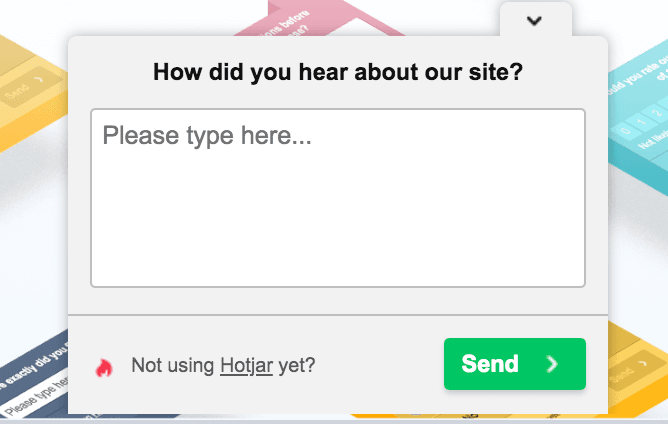
There’s one extremely valuable optimization resource that only you have access to: your customers .
You can receive feedback from customers or users in a variety of ways:
- NPS
- On-site surveys
- Survey invitation link for off-site: Send a survey invite link directly to your customers or email subscribers so that they can respond in their own time
Feedback widgets such as Incoming feedback allow users to express their love or hate for your page. Users can click on any element and add a comment.
